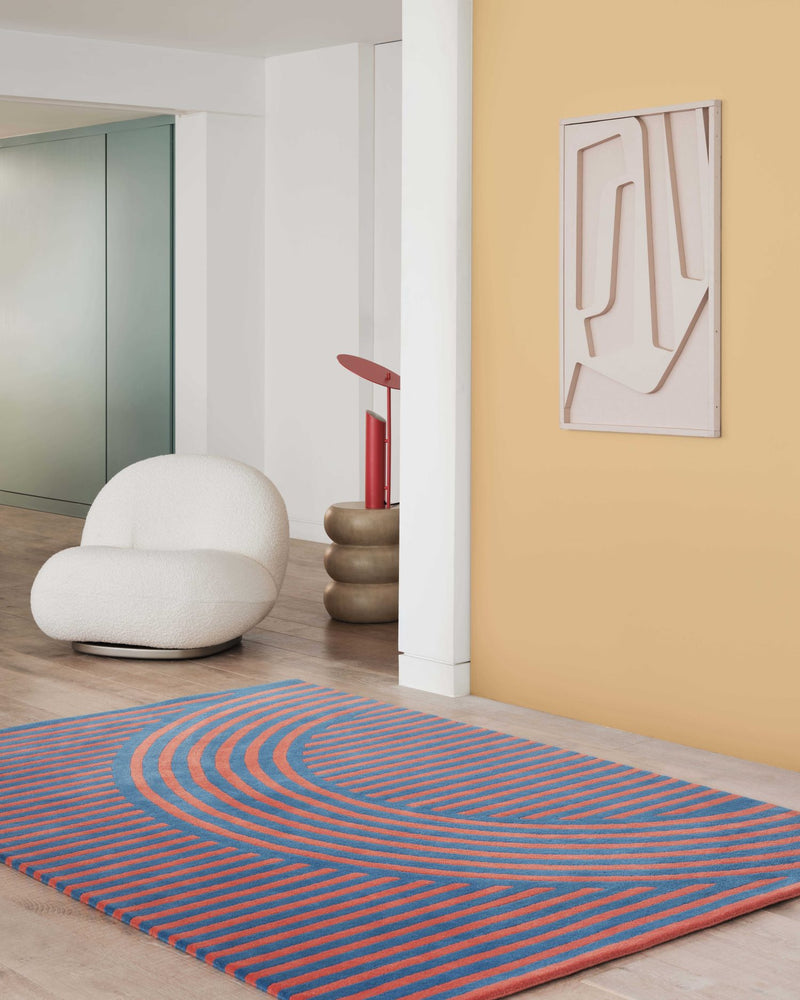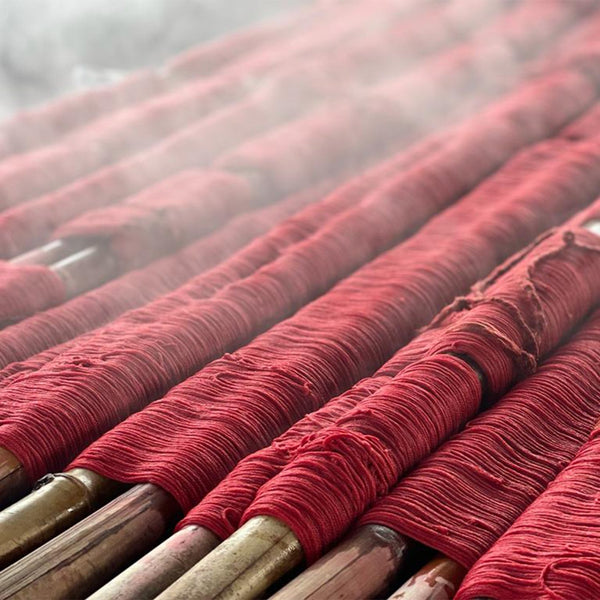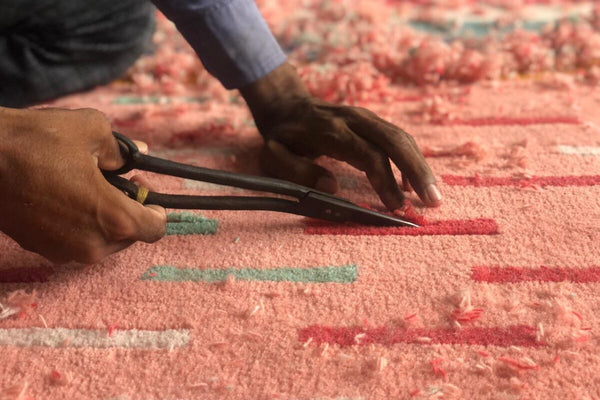
RUG CARE GUIDE
Scroll down for some expert tips on how to maintain that freshly unrolled rug feeling for longer along with guides on what to do for spills and stains.
GIVE YOUR RUG A LONGER LIFEWITH THESE HELPFUL HACKS:
THE BASICS
- Placing your rug on a quality underlay will keep it in place and add an additional layer of depth.
- Popping a few protective cups under furniture legs will help stop permanent indentations.
- Regularly changing the position of any furniture that sits on your rug will protect the carpet fibres from being crushed.
- Rotate your rug 180 degrees every 6-12 months so that it wears evenly.
- Avoid storing rugs in plastic for long periods of time, it could cause condensation leading to mold and running colours especially on wool rugs.
- Plants placed on rugs can create water damage, leading to mold - better to place them on hard floors out of the way.
- It’s best to give your rug a professional clean every 2-4 years to keep your rug thriving for as long as possible.
DAY TO DAY CARE FOR DIFFERENT PILE HEIGHTS
A pile height is what indicates the depth of a rug, hand knotted and tufted rugs come in various pile heights whereas flatwoven and jacquard rugs don’t have a pile height because they're woven flat.
For short-pile rugs, regular vacuuming really is key. Unless it’s removed, dirt can work its way down deep into the rug pile causing wear and tear and eventual breakage. We’d recommend vacuuming once a week to maintain its vibrance.
If you’ve opted for a longer-pile rug, you’ll need to take a gentler approach. With these rugs, excessive vacuuming can be damaging and result in increased shedding.
We recommend shaking or beating your rug the old-fashioned way to dislodge the majority of dirt and grit and then to run over it lightly with a vacuum cleaner using an attachment without bristles.
DEALING WITH SPILLS
If you have a bit of an ‘oops’ moment with a spillage on your rug try not to panic and start rubbing the stain, it'll just make it worse. Similarly, avoid the temptation of making it tomorrow’s problem as that won’t help either. Instead, follow these easy-to-follow steps to prevent the stain spreading and manifesting.
- Remove any solid matter then use a clean white cloth or paper towel to carefully soak up any excess liquid – blot, don’t rub.
- Next, using the appropriate carpet cleaner (see stain removal section below) and a fresh clean cloth. Work from the outside of the stain inwards, taking care not to over-wet the rug.
- Pat off any excess moisture with a paper towel and allow to air dry.
- Where possible, create a sandwich using two clean towels on top and underneath the rug and cover it with a weight or a really heavy book. No judgment if you haven't actually read the book.
- Use a hairdryer on a cool setting and circulate the air around the area gently and then leave the front and back of the rug exposed for at least 24 hours before laying it back down.
If you're repeating this process but finding that the stain simply won't budge, you'll need to contact a professional rug cleaner to get some further advice.
Otherwise - voila, a stain-free rug!
THE BEST SOLUTIONS
Avoid using household bleach as this can cause permanent damage to a rug by dissolving the fibres all together. Even some ‘wool safe’ carpet cleaners can cause colours to bleed and discolour so make sure to test them on a small area before committing to the entire stain.
Washing-up liquid can also cause severe damage to dyes so try and avoid using it - if you already have, make sure that it’s completely washed out with water before leaving the rug to dry.
Here’s some guidance in what to do with different types of stains, you can use soda water or surgical spirit (see specifications below) to get these out by applying the solution and then blotting until no more of the stain transfers onto the towel. You can use these solutions using the same step-by-step process as above.
Soda Water
Alcohol, Blood, Chocolate, Curry or Liquid Foods, Dye, Emulsion Paint, Excrement, Fountain Pen Ink, Fruit Juice, Jam, Ketchup, Milk, Mud, Soft Drinks, Sweets, Tea or Coffee, Urine
Surgical Spirit
Ballpoint Pen Ink, Butter, Chewing Gum, Egg, Fats, Felt Tip Pen, French Polish, Glue, Grass, Grease or Oil, Ice Cream, Lipstick, Lotions or Creams, Nail Varnish, Shoe Polish, Tar, Vomit
STURDIER STAINS
Place some brown paper over the wax and rub a medium warm household iron gently (without steam) on top of the paper so that the wax melts. Repeat this with different parts of the brown paper to absorb the liquid without smearing it into the rug. Patience really is a virtue with this process! After most of the liquid wax has gone, use a bit of surgical spirit to get rid of the oily residue by blotting and then drying (follow stain removal guide above).
You’ve probably heard that splashing a bit of white wine on top will do the trick or a sprinkle of salt. You’ll want to avoid these ‘hacks’ as they can actually help set the stain into the rug, salt is often used to set dyes. It’s a lot safer to use Soda Water - keep calm, follow the stain guidance and take a sip of that white wine.
Hover a vacuum cleaner over the rug so that the loose soot is cleaned without rubbing the dirt further into the pile. You can also use sticky tape to remove any dry pieces from the surface.
LOOSE THREADS AND FLUFF
Loose Threads
During the rug manufacturing process, occasional loose threads or fluffing can sometimes occur due to its hand-made nature, rest assured this isn’t a sign of damage to your rug and is easily solved.
For loose threads simply snip the thread to the desired height with a pair of scissors. Don’t pull it with force as this could damage the density of the rug, you can just snip the thread so it's the same height as the surrounding yarns.
Fluff
Don’t be alarmed if you spot fluff or pilling on the surface of your rug; this is a natural result of yarn compression during the making of your rug. Vacuum regularly to remove it, and the problem should settle over time.
PETS AND PESTS
Pets
If you share your home with a dog or a cat, we’d recommend you purchase an all-wool rug rather than one of our mixed-fiber designs. That’s because wool, as a purely organic material, contains natural oils that prevent the absorption of odours.
Pests
Unwelcome guests such as moths on the other hand are attracted to natural fibers. It’s vital to discourage moths by vacuuming your space often, concentrating on dark crevices and skirting boards where they are likely to lurk. Moths hate being disturbed so lifting and turning your rug on a regular basis will help deter them.


